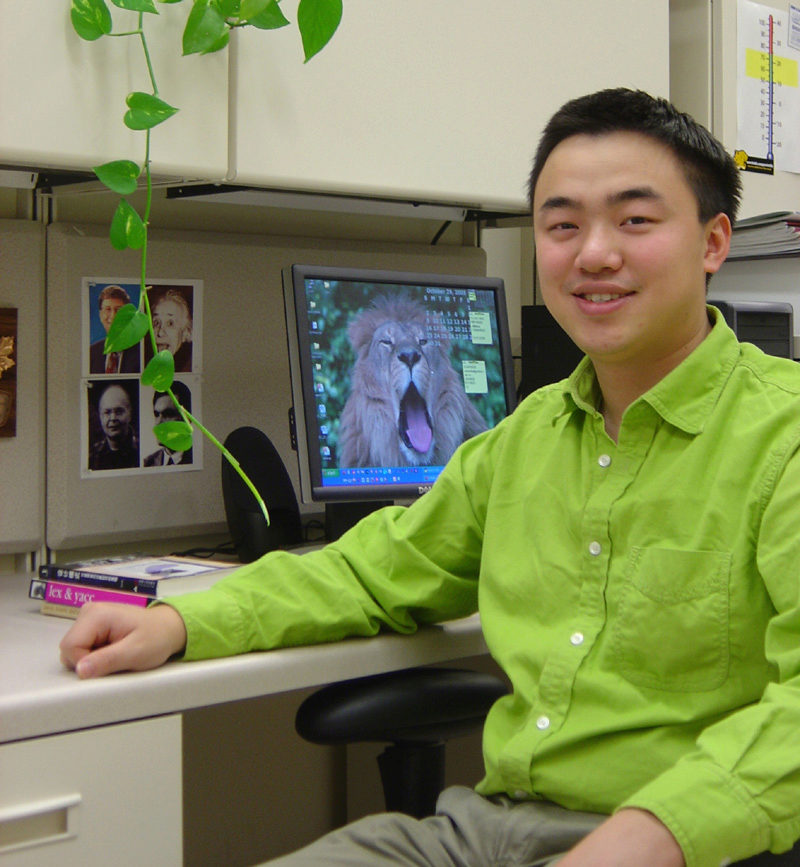Xun Luo’s Ph.D. Thesis Presentation
March 4th, 2008
Categories: MS / PhD Thesis

About
Xun Luo’s Ph.D. thesis defense presentation, titled PACE: a Framework for Personalized Visualization and Scalable Human-Computer Interaction. will be held Tuesday, March 4 from 3-5pm in EVL’s main lab, room (2036). A short demo will be shown after the presentation.
Abstract
Virtual reality (VR) is a technology which allows a user to interact with a computer-simulated virtual environment (VE). Since inception it has created impact in various fields, but not yet gained wide acceptance by personal users. At the same time, personal mobile devices (MDs) have evolved tremendously during recent years. The deployment of MDs is virtually pervasive; the hardware configurations are enhanced to be comparable to low-end desktop systems; and there are drastic improvements in the infrastructures supporting wireless inter-device connectivity and collaboration. These trends make novel applications and business models of VEs in the personal context promising and desirable. However, to make the key elements of a VE, i.e. visualization and interaction, work as smoothly for MD-based systems as for desktop-based systems, three research challenges need to be addressed, for which the technical solution portfolio is far from complete: 1) which visual factors of a VE determine the user’s performance in size perception? 2) How to effectively collect a user’s biometrical data by him / herself to build personalized profiles? 3) How to efficiently make use of the processing resources in the infrastructure for human-computer interactions?
This work, named as Personal Augmented Computing Environment (PACE), sets its goal for personalized visualization and scalable human-computer interaction. It attacks the three challenging research problems and makes three major contributions. Firstly, to determine the effects of different visual factors on the correct size perception of virtual objects in an immersive VE, a set of controlled experiments are designed and conducted in a CAVE system. In the experiments three visual factors, namely scene complexity, stereovision and motion parallax are examined. The results suggest that scene complexity and stereovision significantly affect users’ size perception, while motion parallax does not exhibit a significant effect. Being conducted by no other researchers before, this study helps better understanding of the size constancy performance.
Secondly, an effective process to collect a user’s hand sample images for posture profile building is proposed and implemented. The novelty of the proposed process is that it takes advantage of the synergies between mobile device and infrastructure, and uses proactive measure instead of post-processing techniques to improve sample image quality. While most hand posture recognizers’ performance and very sensitive to hand sample image quality and require them to be taken under strictly controlled laboratory setting, by employing the process proposed and implemented by this work, the mobile device user can collect hand sample images by self with relative ease, and still able to obtain satisfying posture profiles.
The third contribution of this work is a set of scalable computing techniques to speedup the tasks of a vision-based hand detection and recognition using computer clusters. These techniques include a novel data structure, called a scanner node tree which is used to manage cluster nodes; a unique load balancing algorithm to evenly distribute workload across nodes; and a node-to-node messaging protocol for parallel processing. The set of scalable computing techniques has been proved to be efficient by various evaluation metrics. Enabled by these techniques, a hand tracker/controller named Hand Wand is implemented and integrated with a large scale tiled display instrument as a human-computer interaction device.
This work also introduces one preliminary and early work for personal VE: a reach-and-grasp training environment for in-home rehabilitation of stroke survivors. This pilot study achieved certain results and were successful to some extends. By analyzing the methods and outcome of this study, as well as working closely with domain experts,important lessons are learned with insightful ideas, which strongly motivated the need for the final approaches. It is the author’s hope that by leveraging the human study results, design principles,implementation techniques and application evaluations in this work, it could be helpful to offer new and advantageous ways for the mobile devices to deliver enriched user experience.